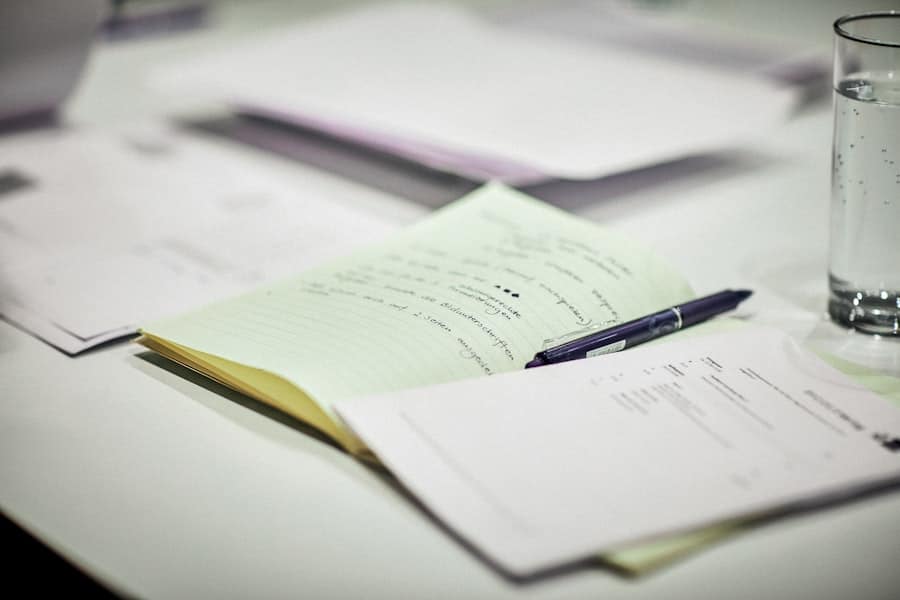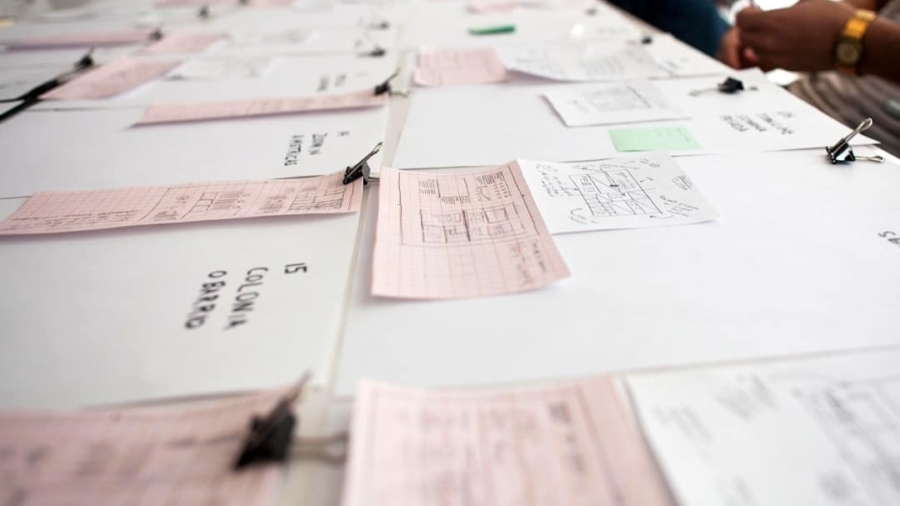Selecting the appropriate note-taking application is a critical first step in establishing an effective system for managing information. With a plethora of options available, ranging from simple text editors to sophisticated organizational tools, it is essential to consider your specific needs and preferences. For instance, if you are a student who frequently attends lectures, an app that allows for audio recording alongside text notes, such as Notability or OneNote, may be beneficial.
These applications not only enable you to jot down key points but also allow you to revisit the audio recordings, providing a comprehensive review of the material covered. Moreover, the choice of a note-taking app should also take into account the platforms you use. Some applications are optimized for specific operating systems, while others offer cross-platform functionality.
Evernote, for example, is renowned for its versatility across devices, allowing users to access their notes on smartphones, tablets, and computers seamlessly. Additionally, consider the collaborative features of the app. If you often work in teams or need to share notes with colleagues, tools like Google Keep or Microsoft OneNote provide real-time collaboration capabilities that can enhance productivity and streamline communication.
Key Takeaways
- Choose a note-taking app that suits your needs and preferences, considering factors such as accessibility, features, and compatibility with your devices.
- Create a systematic approach to organizing your notes and documents, such as using folders, categories, or labels to keep everything in order.
- Utilize tags and keywords to make it easier to retrieve specific notes and documents when needed, improving efficiency and productivity.
- Implement a regular backup system to ensure that your notes and documents are always safe and accessible, whether through cloud storage or physical backups.
- Streamline and consolidate your notes and documents regularly to avoid clutter and confusion, making it easier to find and manage important information.
Creating a System for Organizing Notes and Documents
Creating Categories for Efficient Information Retrieval
Once you have selected a note-taking app that suits your needs, the next step is to develop a systematic approach to organizing your notes and documents. A well-structured organization system can significantly enhance your ability to locate and utilize information efficiently. One effective method is to create notebooks or folders based on categories relevant to your work or studies.
Implementing a Hierarchical Structure
For instance, if you are a researcher, you might have separate folders for different projects, each containing subfolders for literature reviews, data analysis, and meeting notes. In addition to categorization, consider implementing a hierarchical structure within your folders. This could involve creating main categories that encompass broader topics and then subdividing them into more specific themes.
” This layered approach not only aids in organization but also allows for quick navigation through your notes, ensuring that you can find what you need without unnecessary delays.
Utilizing Tags and Keywords for Easy Retrieval

Incorporating tags and keywords into your note-taking system can greatly enhance the ease of retrieving information when needed. Tags act as metadata that can be attached to individual notes or documents, allowing for quick searches based on specific themes or topics. For instance, if you are working on multiple projects simultaneously, tagging notes with relevant project names or keywords can facilitate swift access to pertinent information.
This is particularly useful in applications like Notion or Evernote, where tags can be used to filter and sort notes efficiently. Furthermore, developing a consistent tagging strategy is crucial for maximizing the effectiveness of this system. Consider creating a standardized list of tags that you will use across all your notes.
This could include tags for project names, types of content (e.g., research, ideas, tasks), or even urgency levels (e.g., high priority, low priority). By maintaining consistency in your tagging practices, you will reduce confusion and ensure that your notes remain easily searchable over time.
Implementing a Regular Backup System
A robust backup system is an essential component of any note-taking strategy. The loss of important notes due to technical failures or accidental deletions can be devastating, particularly if those notes contain critical information or insights. To mitigate this risk, it is advisable to establish a regular backup routine that ensures your notes are securely stored in multiple locations.
Many note-taking applications offer built-in backup features that automatically save your data to the cloud; however, it is prudent to supplement this with additional manual backups. For instance, consider exporting your notes periodically as PDF files or text documents and storing them on an external hard drive or cloud storage service like Google Drive or Dropbox. This not only provides an extra layer of security but also allows you to access your notes even if you encounter issues with your primary note-taking app.
Additionally, setting reminders to perform these backups at regular intervals—such as weekly or monthly—can help ensure that you remain diligent about protecting your valuable information.
Streamlining and Consolidating Notes and Documents
Over time, as you accumulate a wealth of notes and documents, it becomes increasingly important to streamline and consolidate this information. A cluttered digital workspace can hinder productivity and make it challenging to locate essential materials when needed. One effective strategy for achieving this is to periodically review your notes and identify those that are redundant or no longer relevant.
By consolidating similar notes into single documents or summarizing key points from multiple sources into one cohesive file, you can reduce clutter while retaining valuable insights. Additionally, consider utilizing features within your note-taking app that facilitate consolidation. For example, many applications allow users to merge notes or create links between related documents.
This can be particularly useful when dealing with extensive research projects where various pieces of information are interconnected. By creating a central hub of consolidated notes, you not only enhance organization but also improve your ability to synthesize information and draw connections between different concepts.
Managing and Deleting Unnecessary Files

Identifying Essential Files
Taking the time to review your files periodically allows you to identify what is essential and what can be discarded. This practice not only frees up storage space but also enhances your overall efficiency by reducing the time spent searching through irrelevant materials.
Evaluating Files for Deletion
When evaluating which files to delete, consider implementing a set of criteria to guide your decision-making process. Ask yourself whether the information is still relevant to your current projects or if it has become obsolete. Additionally, consider whether the notes contain unique insights that cannot be found elsewhere in your collection.
Establishing a Routine
Establishing a routine for this process—such as conducting a quarterly review—can help ensure that your digital workspace remains streamlined and focused. By regularly reviewing and deleting unnecessary files, you can maintain an organized note-taking system that supports your productivity and efficiency.
Integrating Note-Taking with Task Management
Integrating your note-taking system with task management tools can significantly enhance productivity and ensure that important tasks do not fall through the cracks. Many note-taking applications offer features that allow users to create checklists or task lists directly within their notes. For example, applications like Todoist or Microsoft To Do can be linked with note-taking apps like OneNote or Evernote, enabling users to convert notes into actionable tasks seamlessly.
This integration allows for a more holistic approach to managing both information and tasks.
This not only streamlines your workflow but also ensures that you have all relevant information at your fingertips when tackling tasks.
Furthermore, by regularly reviewing both your notes and task lists together, you can maintain alignment between your goals and the information necessary to achieve them.
Staying Consistent with Organizational Habits
Finally, cultivating consistency in your organizational habits is paramount for maintaining an effective note-taking system over time. Establishing routines around how you take notes, organize them, and review them can lead to long-term success in managing information effectively. For instance, consider setting aside dedicated time each week to review and organize your notes—this could involve updating tags, consolidating files, or deleting unnecessary documents.
Additionally, developing a habit of taking notes in a structured format can enhance clarity and usability. Whether you prefer bullet points, mind maps, or outlines, sticking to a consistent format will make it easier to navigate through your notes later on. By committing to these organizational practices and making them part of your regular workflow, you will foster an environment where information is easily accessible and manageable—ultimately leading to greater productivity and success in both personal and professional endeavors.
If you’re looking to enhance your productivity and streamline your digital workspace, you might find the article “Top Tips for Organizing Digital Notes and Documents” incredibly useful. For those interested in further optimizing their tech setup, consider exploring related resources such as The Best Apple Tablets 2023. This article provides insights into the latest Apple tablets, which can be excellent tools for managing digital notes and documents efficiently. By combining the organizational strategies from the first article with the right technology, you can significantly improve your digital workflow.
FAQs
What are digital notes and documents?
Digital notes and documents are electronic files that contain information, such as text, images, and other media, that can be stored and accessed on a computer or other digital devices.
Why is it important to organize digital notes and documents?
Organizing digital notes and documents helps to improve productivity, efficiency, and accessibility. It makes it easier to find and retrieve information when needed, and reduces the risk of losing important data.
What are some tips for organizing digital notes and documents?
Some tips for organizing digital notes and documents include creating a clear folder structure, using descriptive file names, utilizing tags and keywords for easy searching, and regularly decluttering and archiving old files.
What are some tools and software for organizing digital notes and documents?
There are various tools and software available for organizing digital notes and documents, such as note-taking apps like Evernote and OneNote, cloud storage services like Google Drive and Dropbox, and document management systems like Microsoft SharePoint and FileCenter.
How can I ensure the security of my digital notes and documents?
To ensure the security of digital notes and documents, it is important to use strong passwords, enable two-factor authentication, regularly back up files, and consider using encryption for sensitive information. Additionally, it is important to be cautious when sharing and accessing files online.

